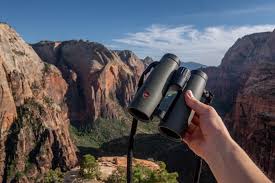Are you looking to use a binocular for spotting climbing routes? When climbing, you need to spot the safest routes from a distance. This is important if you want to make the right choice before going too far. Having the right binocular with you can help you ogle some rocks to climb.
However, not all binoculars are designed for spotting climbing routes. There are crucial specifications to consider. You need something portable and compact that stays on you without feeling bulky. So, if you’re shopping for a binocular for spot climbing and not sure what to choose, there are a few specifications to consider.
It can seem overwhelming, but there are binoculars out there that will suit your needs. Out basic guide aims to help you select the best binocular for spot climbing.
Important specs to consider when choosing a binocular for spot climbing
Size does matter
A compact size binocular is the best for spotting climbing routes. Such binoculars are lightweight and more packable. You don’t need to add extra weight and bulkiness to you when climbing. Most compact size binoculars offer 8×25 and 10×25 magnifications. While these binoculars might not offer a very wide field of view, they are ideal for spotting routes in short ranges.
When spotting routes, you don’t need a light-gathering binocular unless you’re working under low light conditions. Compact binoculars are a lot of lightweight and less expensive. You don’t need to be carrying heavy loads when climbing.
Magnification and objective lens diameter
The binocular numbers are what we call magnification power and lens power. For example, a 10×25 binocular has a magnification of 10 and a lens diameter of 25mm. A magnification of 8x is usually considered the best for spotting climbing routes. You need to avoid binoculars with higher magnifications of more than 8 since they are hard to stabilize. Remember you will be working in unstable terrains as you climb.
Moreover, 10x magnification does not provide many advantages over the 8x. While 10x magnification is clearer, it is a suitable choice for birders and with a lens diameter of 42mm. However, these tend to be bulky and require a stable working platform. The wobble with binoculars of higher magnifications can be nauseating for any climber or bird watcher. Higher magnification binoculars work best when mounted on a stand before use.
For purposes of hiking and climbing, you don’t need a higher objective lens of more than 28mm. a higher objective lens can help gather more light but this also means a bigger size binocular. After all, you’re not focusing at ranges of 1000 yards when spotting routes.
Waterproof and water-resistant
This one goes without saying. You need a waterproof binocular for any outdoor adventure. You need to differentiate between waterproof and water-resistant. Most manufacturers tend to describe water-resistant binoculars are waterproof. Water-resistant binoculars can handle some rain but can allow water inside.
You might consider a compact waterproof binoculars especially when climbing areas with bad weather. Waterproof binoculars feature O-rings that seal out moisture. They can easily survive a sudden splash but not full immersion.
Rubber coating
Since you’re climbing, coming against rocks is a common occurrence. You might end up scratching and damaging your binoculars. This is why you need to consider models with a rubber coating. While the rubber coating might not provide full-crash protection, it can help against minor bumps. This is an important spec for any binocular used in rugged outdoor environments.
Fog-proof
This is another crucial spec, especially when climbing to colder temperatures. Binoculars can quickly fog up especially when moving from regions of high temperatures to regions of colder temperatures. This can be annoying especially when you’re halfway on your climbing. In addition, the fog can be damaging to the binoculars.
However, most modern binoculars counter this problem by replacing the air inside with nitrogen. Nitrogen lacks any moisture content and will not condense under cold temperatures. This helps prevent fogging keeping the internal lens clear even at cold temperatures.
Eye relief
This is another crucial specification especially if you wear glasses. Eye relief is the distance between the eyepiece and your eyes when the whole field of view is visible. You need to consider binoculars that provide you with ample eye relief.
If you happen to wear glasses, consider binoculars with an eye relief of 11mm or more. However, most binoculars tend to have adjustable eye relief giving you the freedom to adjust accordingly.
Lens material and coatings
This is where the technologies of binoculars come into play. The makeup of the binocular glass and coating on the lenses can determine the right binocular to buy. However, be willing to pay more for binoculars with better optics.
